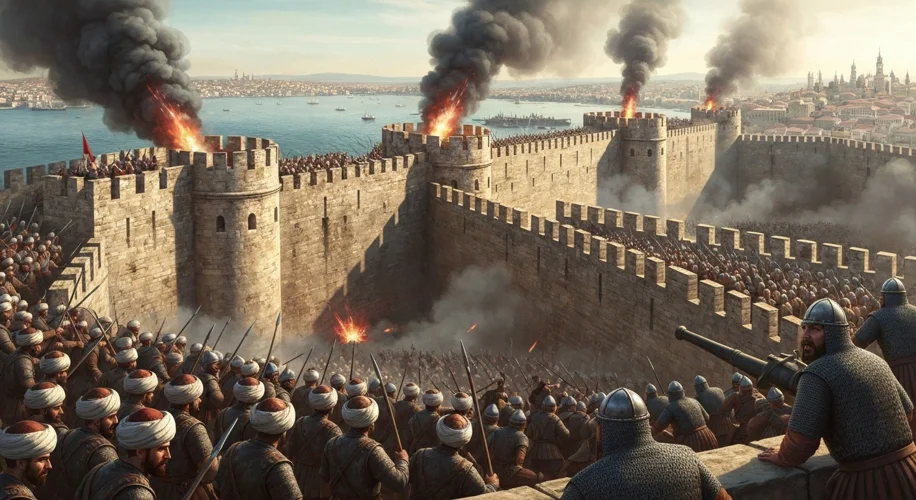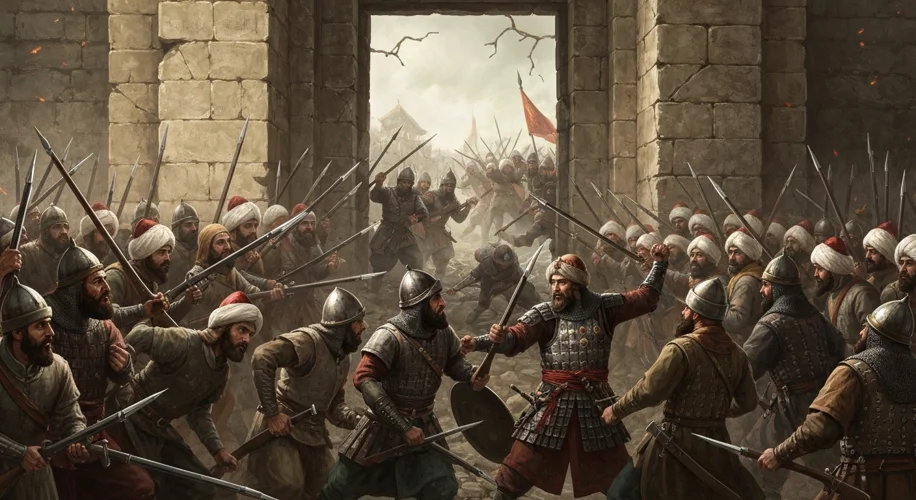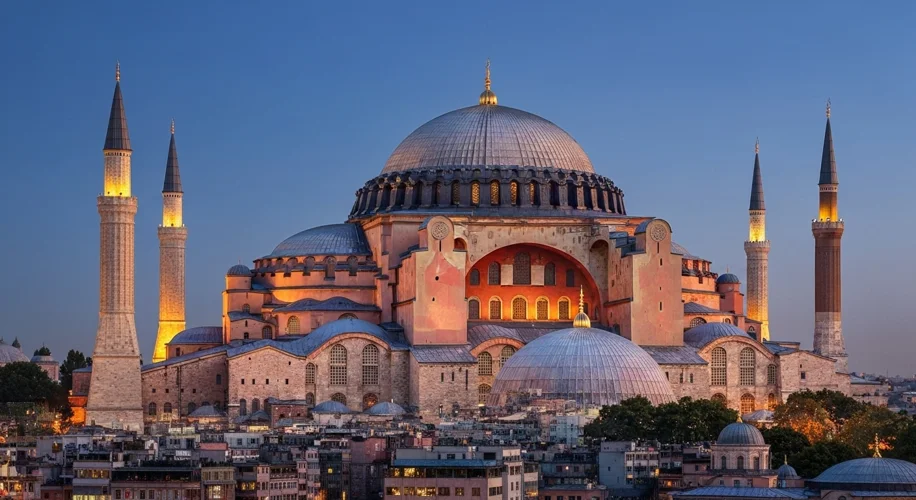The year is 1453. For over a thousand years, Constantinople, the “Queen of Cities,” had stood as the glittering capital of the Byzantine Empire, a bulwark of Christendom and the last vestige of Roman imperial glory. But its golden age was fading, its walls, once thought impregnable, now brittle with age and neglect. Facing it across the Thracian plains was a new, formidable power: the Ottoman Empire, led by the ambitious Sultan Mehmed II, a young man with an unyielding vision of conquest.
Constantinople was a city of legend, a metropolis of sprawling palaces, magnificent churches, and bustling markets, all cradled within formidable triple walls that had repelled countless sieges. Yet, by the mid-15th century, the empire that had once spanned vast territories was reduced to little more than the city itself and a few scattered islands. Its population had dwindled, its treasury was depleted, and its once-mighty army was a shadow of its former self. Emperor Constantine XI Palaiologos, a tragic figure of courage and defiance, found himself commanding a dwindling force against an overwhelming tide.
The stage was set for a confrontation that would echo through centuries. Mehmed II, a brilliant strategist and a relentless engineer, had prepared for this moment with meticulous detail. He commissioned the construction of massive cannons, including the legendary “Basilica,” a monstrous bombard capable of hurling stone balls weighing over half a ton. These were no ordinary siege weapons; they were instruments of biblical destruction, designed to pulverize the ancient fortifications.

The siege began in earnest on April 6, 1453. The air grew thick with the stench of gunpowder and the cries of men. The colossal cannons roared, their thunderous volleys shaking the very foundations of the city. Day after day, the relentless bombardment chipped away at the mighty walls, creating breaches that the defenders desperately tried to repair under the cover of darkness.
The defenders, numbering perhaps 7,000 soldiers, a mix of Byzantines, Genoese, and other European volunteers, fought with the ferocity of cornered lions. Giovanni Giustiniani Longo, a Genoese condottiero, became a symbol of resistance, rallying the troops and organizing the defense with remarkable skill. Yet, the sheer disparity in numbers was crushing. Mehmed’s army, estimated to be between 80,000 and 150,000 men, supported by a formidable navy, was a relentless force.
One of the most audacious feats of the siege occurred on April 22nd. When the Ottomans found their naval advance into the Golden Horn blocked by a heavy chain, Mehmed ordered his ships to be transported overland! In a feat of engineering and brute force, over seventy ships were dragged on greased logs across the Galata peninsula, bypassing the chain and appearing in the Golden Horn as if by magic. This audacious move stunned the Byzantines and opened a new front for the Ottoman assault.
As the weeks wore on, morale within Constantinople plummeted. Food and supplies ran low. The constant bombardment wore down the defenders, and the sheer psychological pressure of facing such overwhelming odds took its toll. Emperor Constantine XI, though aware of the hopelessness of his situation, refused to surrender. He knew that his fate was intertwined with that of his city and his empire.
The final assault commenced on May 29, 1453. Waves of Ottoman soldiers, from irregular Bashi-bazouks to elite Janissaries, hurled themselves against the battered walls. The fighting was brutal and desperate. Giustiniani was gravely wounded and carried from the field, a devastating blow to Byzantine morale. In the chaos, a small group of Ottoman soldiers discovered a small, unguarded postern gate, the Kerkoporta. They poured through, raising the Ottoman standard on the walls.

With the walls breached, the fate of Constantinople was sealed. Emperor Constantine XI, casting aside his imperial regalia, plunged into the thick of the fighting, seeking a heroic death alongside his men. His ultimate fate remains a subject of legend, but his courage in the face of annihilation became a defining moment.
The fall of Constantinople was not just the end of a city; it was the end of an era. The Byzantine Empire, the direct successor to the Roman Empire, had breathed its last. Its fall sent shockwaves across Europe, marking the definitive end of the Middle Ages and ushering in a new geopolitical reality. The Ottomans, now masters of a strategically vital crossroads, would go on to dominate the Eastern Mediterranean and the Balkans for centuries.
Constantinople was renamed Istanbul, becoming the magnificent capital of the vast Ottoman Empire. Hagia Sophia, the awe-inspiring cathedral, was converted into a mosque, a potent symbol of the shifting religious and political landscape. The fall also fueled the Renaissance in Western Europe, as Byzantine scholars fled westward, bringing with them classical texts and knowledge that had been preserved for centuries in the East.

The Siege of Constantinople in 1453 was more than a military conquest; it was a cataclysm that fundamentally altered the course of history, a dramatic climax to a millennium-old empire, and a stark reminder of the cyclical nature of power and civilization.

